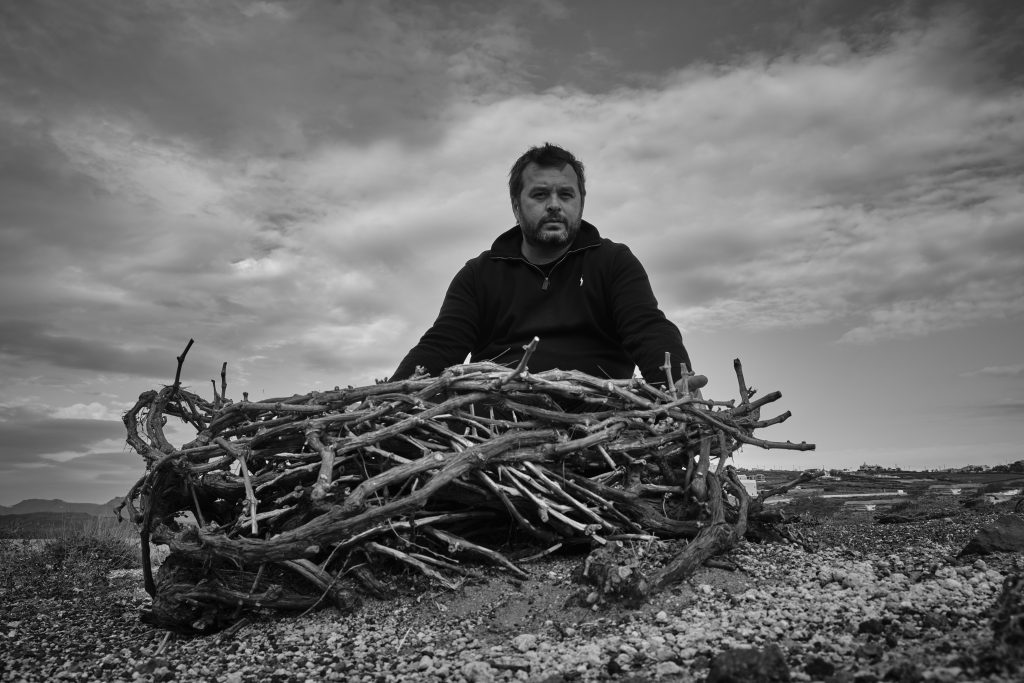
Greece is a hot bed of intriguing native varieties and a generation of new winemakers who are pushing the boundaries to create some delicious and unusual wines.
It’s spring, but still chilly and I’m longing for blue skies and warm sunshine so we’re off to North West Greece where Apostolos Thymiopoulos (above) makes eye catching reds in the village of Trilofos in Nauossa.
Xinomavro maybe unfamiliar, but in profile is strangely reminiscent of both Pinot Noir and Nebbiolo. They share floral aromatics, a slim texture, fresh acidity and the capacity of fine texture, albeit Nebbiolo and Xinomavro lean to the austere. Xinomavro nods to Nebbiolo’s savoury, rather than fruity, flavour profile, while all three have a special translucency to the terroir. And this Greek turf is worth a close look.
The Nose was particularly struck by two of Apostolos’s wine. ‘Alta’ from a vineyard at 500-600m grown on a schist and gravel soils and Kayaks, from a much lower site at 180m, and planted on clay soil. The wines have a clear sense of place.
Naoussa Alta 2016
Pale colour, floral fragrance and fine talcy texture. Delicate and light. This is un-oaked, pure, energetic and mineral. You taste the freshness of the higher location.
Naoussa Kayafas 2016
This comes from a single vineyard, where the vines are un-grafted. Gamey, full and rich. Flesh, power and substance. Clearly a child of the clay.
Apostolos racks it up a notch with a wine poetically called ‘Earth and Sky’ made from older vines growing in lower and upper sites. This is more compact, layered and dense. He’s using barriques. I find it a touch oaky at the moment, but it will mellow and he is planning a move to larger format foudres… which seems a good idea.
Greece has a plethora of intriguing grape varieties so now for a blend.
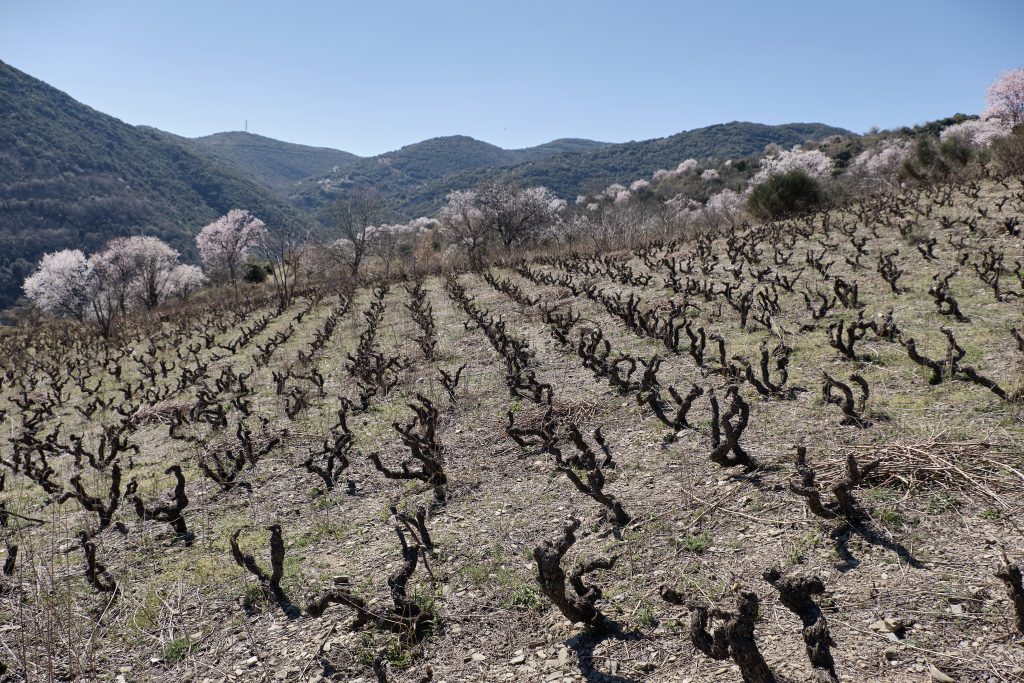
Rapsani Terre Petra
Xinomavro, Krassato and Stavroto – this sounds more like a trio of crusty old blokes sharing a bottle of ouzo in the village bar than three grape varieties. They are cultivated organically in an 11 hectare vineyard (above) to make a wine which has a firm mineral intensity and vigour.
And for rosé as we’re not far off summer, Apoltolos Thymiopoulos’s steps up with…
Rosé de Xinomavro 2017
Floral, rose petal aromatics waft from the glass of this silky textured rosé which is fresh and has a light tannic bite.
Santorini
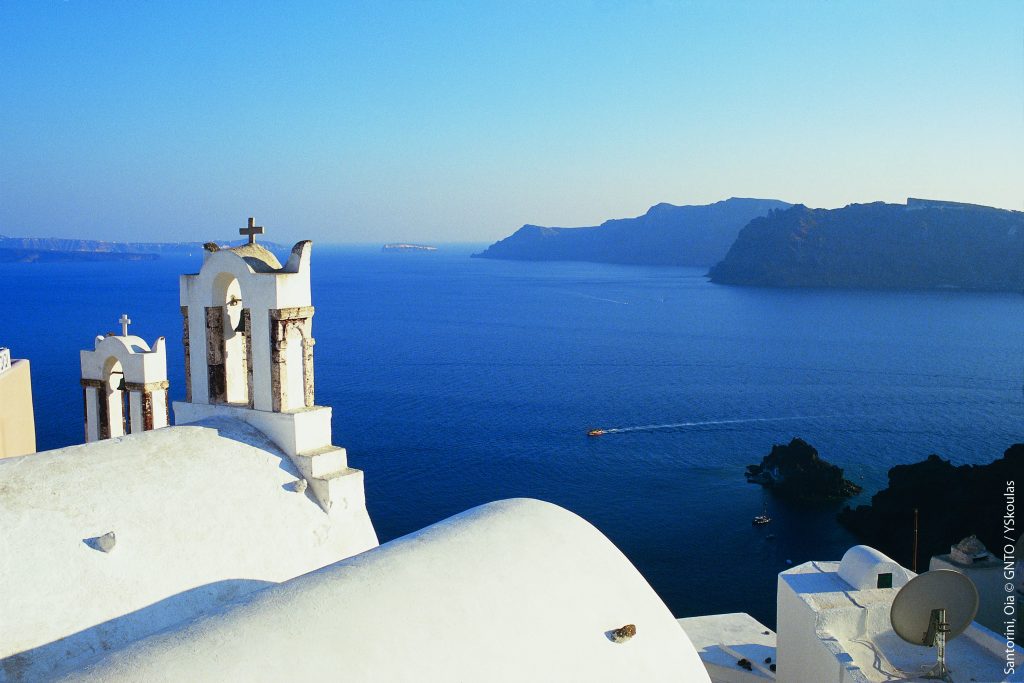
Time for white and we’re moving to the gorgeous island of Santorini where there are two white grapes varieties of note, the indigenous Aidani and Assyrtiko.
Aidani could be just your thing if you favour an overtly perfumed white, along the lines of a less potent Gewurztramminer or a super spicy Pinot Gris, but The Nose finds Assyritiko much more to her liking.
Assyrtiko has become synonymous with Santorini. It has the advantage of retaining fresh acidity on this sun baked island, moreover it’s a good conduit of the terroir. After all,, if there is no sense of place, you’re just left with just a varietal wine.
Assyrtiko has sufficient personality to make it interesting while it’s not so assertive it dominates. It’s slightly floral and really quite citrus, often with a touch of spice. All the wine I tasted has a slightly salty character. This may well come from the soil… a certain sense of minerality drawn from roots delving deep into the volcanic soil or from the salt laden night air which settles in a damp blanket on the soil, ‘watering’ the vines and contributing a certain ‘seasoning’ to the wine they produce. Frankly I have no idea which, but either way, the Nose was enjoying the results. You sense the heat of the island and while the wine can be pretty rich, it is not heavy and it ages rather well.
The Nose was fortunate to delve into a flight of mature vintages from the winery of Hatzidakis. Assyrtiko will age for ten years or so. We tasted back to 2009. This revealed the wine slimming down becoming more salty, less fruity and gaining in interest.
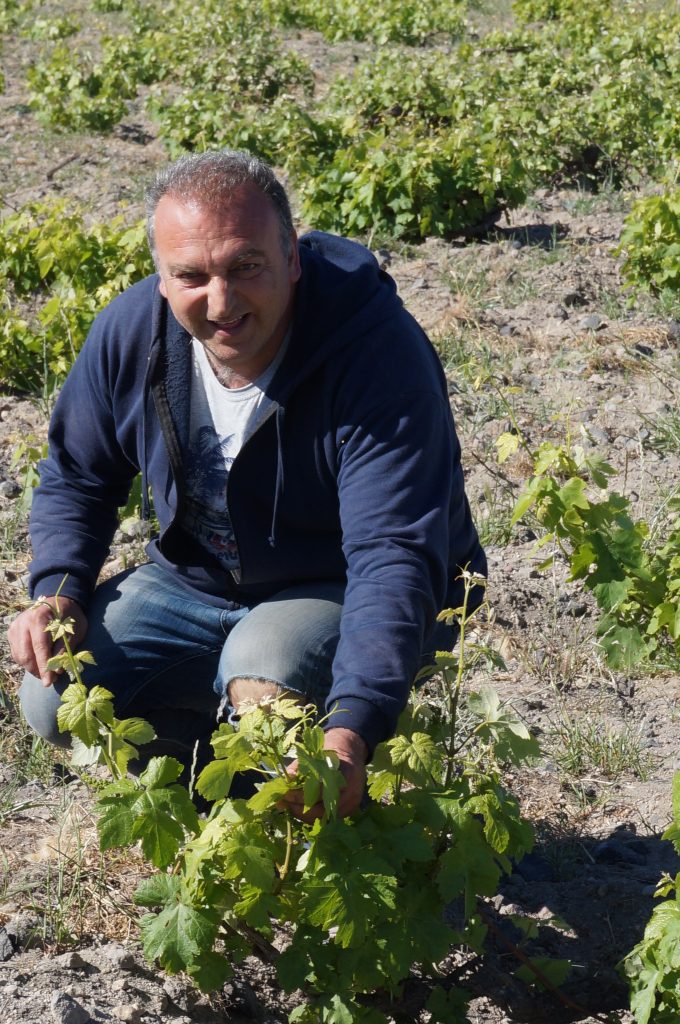
Haridimos Hatzidakis (above) really pioneered Assyrtiko on Santorini. He recognised its potential as a single varietal wine and where he led other followed. At the beginning – in 1996 – he replanted a small vineyard in the village of Pyrgos Kallistis. It had been abandoned after a large earthquake in Santorini in the Fifties. He began with Aidani, to which he added Assyrtiko and Xinomavro. The vines are cultivated organically on their own rootstock. The pesky phylloxera never discovered this holiday paradise… so vines here need not be grafted onto American rootstock.
They have other challenges – strong winds and fierce sun. To protect them, the vines are curled like small baskets near the ground. Sadly Haridimos passed away in 2017, but his daughter is now running the estate.
It’s a young, girl power team for the winemaker is twenty something Stella Papadimitriou. They are doing a great job and have launched a new wine called Skitali.
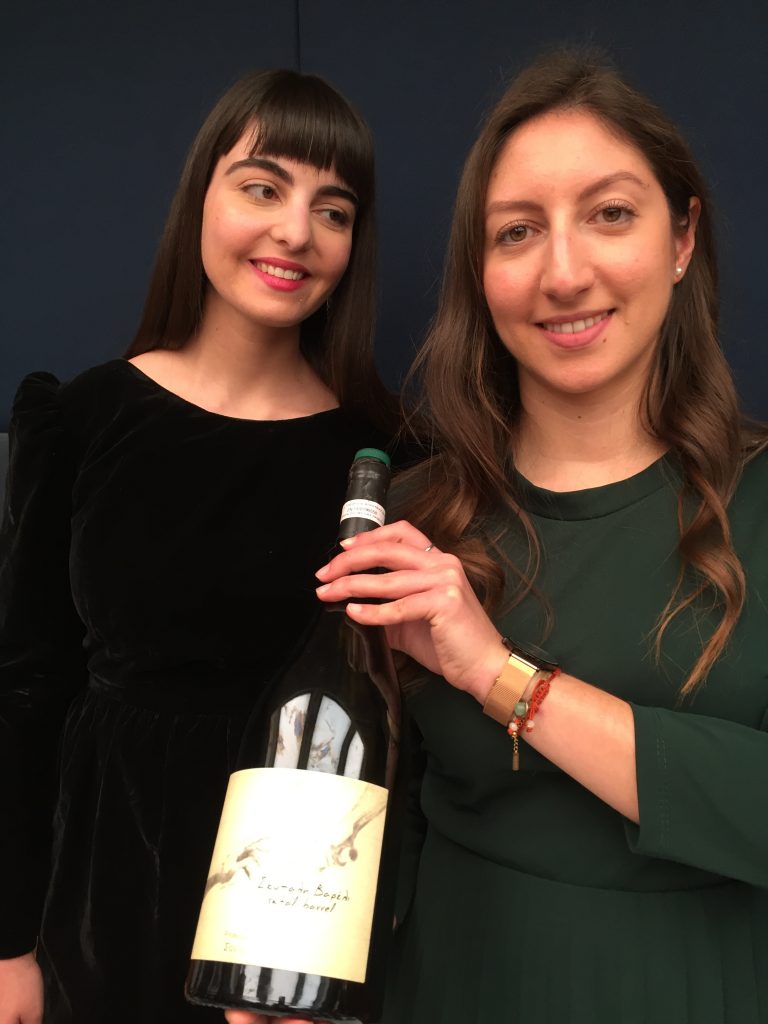
Hatzidakis Skitali 2016
This comes from a high altitude vineyard, which ripens and is picked later. It’s kept for a year on lees in stainless steel tanks and this comes across in certain rich nuttiness. It is fresh and fruity with lemony notes, quite a full body and a salty finish.
*Hatzidakis Skitali Barrel 2018
In magnums only. This is more reserved. It is dense and quite powerful. The oak ageing works well to support the palate and it has power, intensity and layering.
*Hatzidakis “Santorini Cuvée 15” 2917
This is organic. It is kept in stainless steel for 6 month on lees and is notably aromatic. This vineyard seems to bring out the spicy side of the grape, but is underscored with firm minerality and a good balancing acidity. Appealing ripe citrus generosity and richness.
Hatzidakis Nykteri 2016
This is the highest altitude vineyard. Last to be picked. I believe there may be dried grapes here too and this would account for the alcohol – a heady 14.7. This is more traditional. It is kept in old oak, but the barrels are not topped, so it has a more oxidative style which works a treat with the salty character, enhancing it. While it is not as ‘fresh’ as the previous wines and has a lower impression of acidity, it has more obvious minerality. It is a big wine though. Beware.
Hatzidakis Vinsanto 2004
This is made from sun dried Aidani and Assyrtiko and is barrel aged.
Half bottles only. With a whopping 350g of residual sugar, this is strictly for those with a sweet tooth. Deep coffee colour. It’s much fruitier than I expected with dried pears and a touch of prune. It is spicy and aromatic and surprisingly fresh to boot. Just delicious.
Stockists
Eclectic Wines: [email protected]
Rose de Xinomavro 2017 £14.50
Naoussa Alta 2016 £16.60
Naoussa Kayafas 2016 £18.20
Rapsani Terre Petra £25.70

